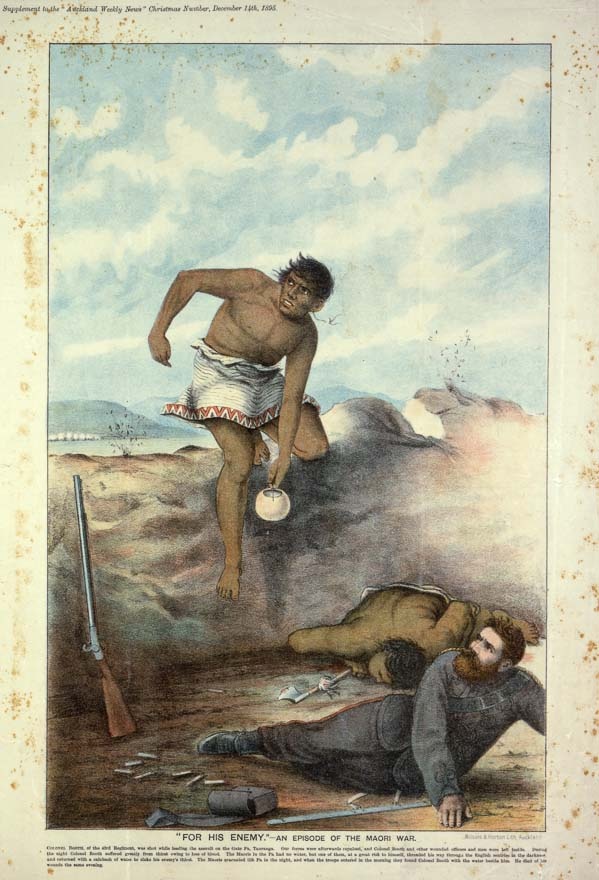
‘For his enemy.’ – An episode of the Maori War. Lithograph, Wilson & Horton, Auckland, 1895.
In this portrayal of a famous incident during the battle for Gate Pā, Lieutenant-Colonel H.G. Booth is given water as he lies dying in a trench. Many of the British wounded called out for water during the night following the failed assault. Water was delivered to those in need, so the story goes, in accordance with the rules of engagement drawn up by Hēnare Taratoa on behalf of the Ngāi Te Rangi leader, Rāwiri Puhirake. This code of conduct stated that the wounded would be treated fairly. Some believe that it was Taratoa himself who took water to Booth. It is possibly Taratoa who is shown in this romaticised depiction of the incident that appeared in the Auckland Weekly News in 1895.
Other evidence suggests that it was in fact the only woman still present at Gate Pā, Hēni Te Kiri Karamū, who was the ‘angel of mercy’ that evening. She delivered water to those who cried out for it, using an old iron nail-can. Before he died Booth supposedly told Assistant Surgeon William Manley that a Māori woman who spoke English had given him water. Hēni Te Kiri Karamū backed up this version when questioned some 30 years later. Taratoa was unable to shed any light on the matter. He was killed in battle at Te Ranga in June 1864.
On the memorial to Rāwiri Puhirake at the Mission Cemetery – also known as Military, or Old Military, Cemetery – in Tauranga, a white marble frieze depicts another version of this event. The mortally wounded Booth is shown lying at the feet of Puhirake. The Ngāi Te Rangi leader gestures to his men to bring water, which is being conveyed to the scene in a gourd. In addition to Hēni Te Kiri Karamū, research on this memorial has thrown up another possible good Samaritan: a man named Te Ipu.

Community contributions